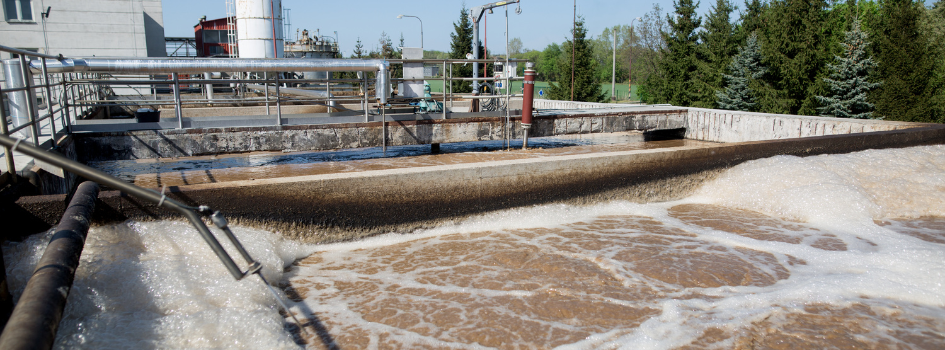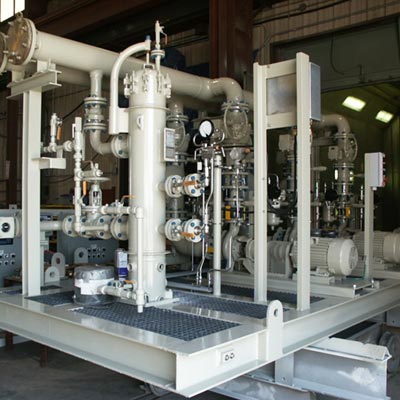
Understanding Particle Filtration Systems for Wastewater Management
As industries and municipalities generate large volumes of wastewater, effective treatment methods are essential to remove contaminants and ensure compliance with regulatory standards.
A crucial component of wastewater treatment is particle filtration, which removes suspended solids and other particulate matter from the wastewater stream. Keep reading to explore the role of particle filtration in wastewater treatment.
Wastewater Management Challenges
Wastewater management presents several challenges, including the presence of various contaminants, fluctuating flow rates, and stringent discharge regulations. Suspended solids, such as sand, silt, and organic matter, can cause operational issues in wastewater treatment systems, reducing efficiency and increasing maintenance requirements. Additionally, wastewater composition can vary significantly depending on the source, making it difficult to design a one-size-fits-all treatment solution.
Another challenge in wastewater management is meeting the ever-increasing regulatory standards for effluent quality. Regulations, such as the Clean Water Act in the United States, set strict limits on the levels of pollutants that can be discharged into water bodies. Failure to comply with these standards can result in hefty fines and legal consequences, making effective wastewater treatment a top priority.
The Role of Particle Filtration in Wastewater Treatment
Particle filtration is a critical step in industrial wastewater treatment, as it removes suspended solids and other particulate matter that can interfere with downstream processes and impact effluent quality. By removing these particles, filtration systems help to protect equipment, improve treatment efficiency, and ensure compliance with discharge regulations.
Particle filtration typically occurs after primary treatment, which removes large debris and settleable solids, and before secondary treatment, which focuses on removing dissolved organic matter and nutrients. Filtration systems can be designed to target specific particle sizes and types, depending on the wastewater characteristics and treatment goals.
Types of Particle Filtration Systems
There are several types of particle filtration systems used in wastewater treatment, each with its own advantages and applications. Some of the most common types include:

1. Cartridge Filtration
These systems use cylindrical filter elements, typically made of wound or pleated media, to capture particles as wastewater flows through the cartridge. They are effective for removing particles down to the micron level and are often used as a polishing step to ensure high effluent quality. Cartridge filters are easy to install and maintain, with replaceable filter elements that can be changed out as needed.
2. Bag Filtration
These systems use cylindrical bags made of woven or non-woven fabric to strain particles from the wastewater stream. They are suitable for removing larger particles, typically down to the 1-100 micron range, and are often used as a pretreatment step before other filtration methods. Bag filters are cost-effective and easy to operate, with disposable filter bags that can be replaced when they become clogged.
3. Self-cleaning Filters
Self-cleaning filters, such as screen filters and disc filters, are designed to automatically remove accumulated solids from the filter media without interrupting the filtration process. These systems typically use a backwash mechanism to periodically flush the captured particles from the filter surface, ensuring continuous operation and reducing maintenance requirements.
Benefits of Particle Filtration Systems
Implementing particle filtration systems in wastewater treatment offers numerous benefits.
- Higher Effluent Quality: Removing suspended solids and particulate matter improves effluent quality, helping to meet regulatory standards.
- Protection of Downstream Equipment: Filtration systems prevent particles from entering and damaging downstream equipment like membranes, UV disinfection systems, and oxidation processes.
- Lower Maintenance Requirements: By capturing particles before they accumulate in pipes, tanks, and equipment, filtration systems reduce maintenance needs and minimize downtime.
- Efficient Downstream Processes: Removing particles allows downstream processes to operate more efficiently by focusing on treating dissolved contaminants without interference from suspended solids.
- Versatility: Particle filtration systems can be designed to handle a wide range of flow rates and wastewater characteristics, making them suitable for various applications and scales of operation.
Discover DXP’s Wastewater Management Solutions
DXP’s wastewater management solutions incorporate advanced particle filtration systems to help industries and municipalities achieve efficient, reliable, and compliant wastewater treatment. Our team of experts works closely with clients to assess their specific needs and design customized filtration solutions that optimize performance and minimize costs.

